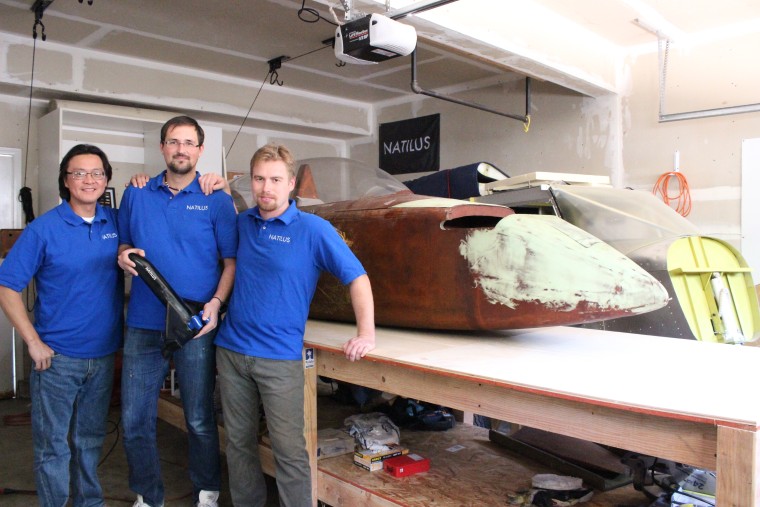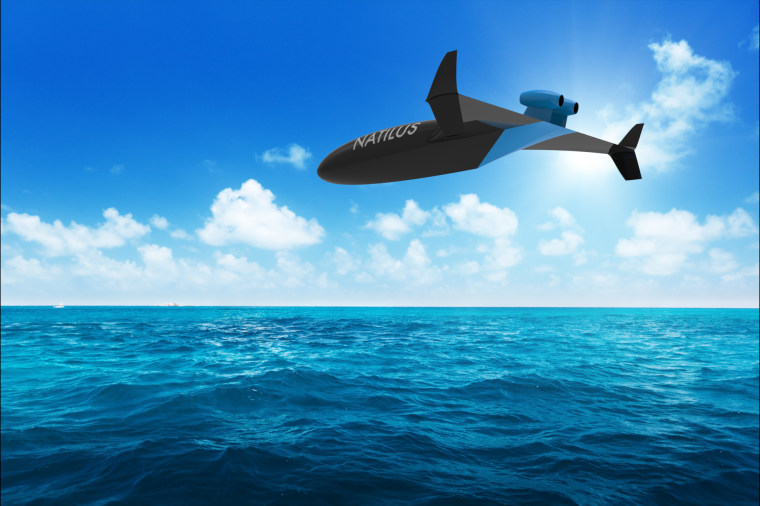Unmanned aerial vehicles, or drones, are now used for all sorts of things, from taking out terrorists to delivering take-out. Now a tiny start-up in California’s Bay Area is working on what it hopes will be the next big thing: large autonomous drones capable of moving freight across the Pacific Ocean more cheaply than conventional piloted cargo planes and faster than cargo ships.
Natilus Inc., of Richmond, Calif., is building a 30-foot prototype drone that could take to the air for the first time later this year. If all goes as planned, the firm will develop an 80-foot drone that will begin flying routes from Los Angeles to Hawaii in 2019. A 140-foot drone with a 200,000-pound cargo capacity could be flying routes to China starting in 2020.
Related: One of These Drones Could Save Your Life
Made of carbon fiber composites and powered by jet engines, the drones would take off from the water, eliminating the need for landing gear and long landing strips. It would land on water several miles from port before taxiing to the dock, where cranes would unload the cargo.
The amphibious drones would cruise at an altitude of about 20,000 feet and would fly slower than piloted cargo planes.
“Commercial pilot airplanes don’t want to fly slower because it would take forever to get there and pilot fatigue becomes an issue," Natilus CEO Aleksey Matyushev told NBC MACH in an email. "For drones, that is not the case.”
Related: Passenger Drones Will Take to the Skies This Summer
And with no crew to pay — and since reduced speed means reduced fuel costs — shipping via the drones would cost about half as much as shipping by piloted cargo planes, the company says.
Shipping 200,000 pounds of freight from Los Angles to Shanghai via drone, for example, would take about 30 hours at a cost of about $130,000, the company says. Delivery of the same cargo by a Boeing 747 takes about 11 hours and costs about $260,000. (Moving the same cargo to Shanghai by ship would cost about $61,000 but would take three weeks.)

Natilus hopes to build hundreds of the drones and sell them to FedEx, UPS, and other companies, Fast Company reported. But with just three full-time employees, the firm might outsource some construction efforts. Matyushev said in the email that Natilus had been “talking with a couple of larger aerospace companies (to remain unnamed) to help us put the larger vehicle together.”
Matyushev sounds confident. But are cargo drones like the ones he envisions really going to disrupt transoceanic shipping?
Dr. John Michael Robbins, an assistant professor at Embry-Riddle Aeronautical University in Daytona Beach, Florida, called cargo drones “extremely feasible” in an email to NBC News MACH, adding “it will take some time” for them to be proven safe and efficient. “The aircraft not only have to be built and tested in order to pass the rigorous process of certification, but society has to accept the technology in order for it to truly become commercially viable."
The Federal Aviation Administration is still working on creating regulations regarding the commercialization of unmanned aircraft, according to Robbins. But, Matyushev said, “The FAA has been nothing but supportive of the project.”

